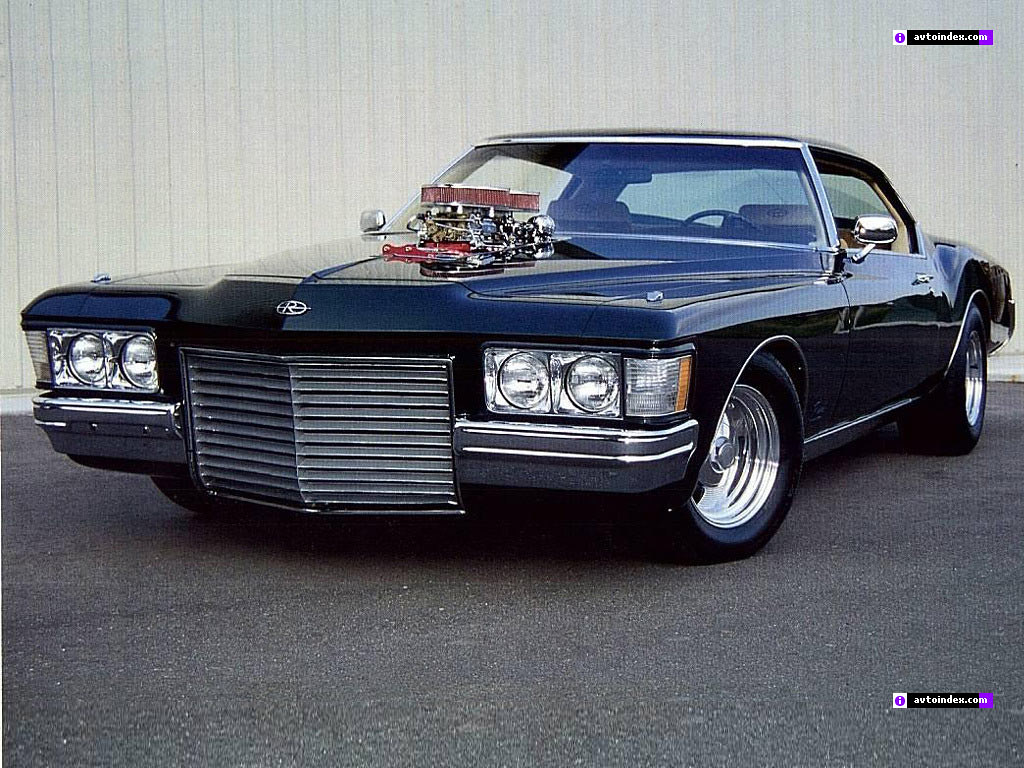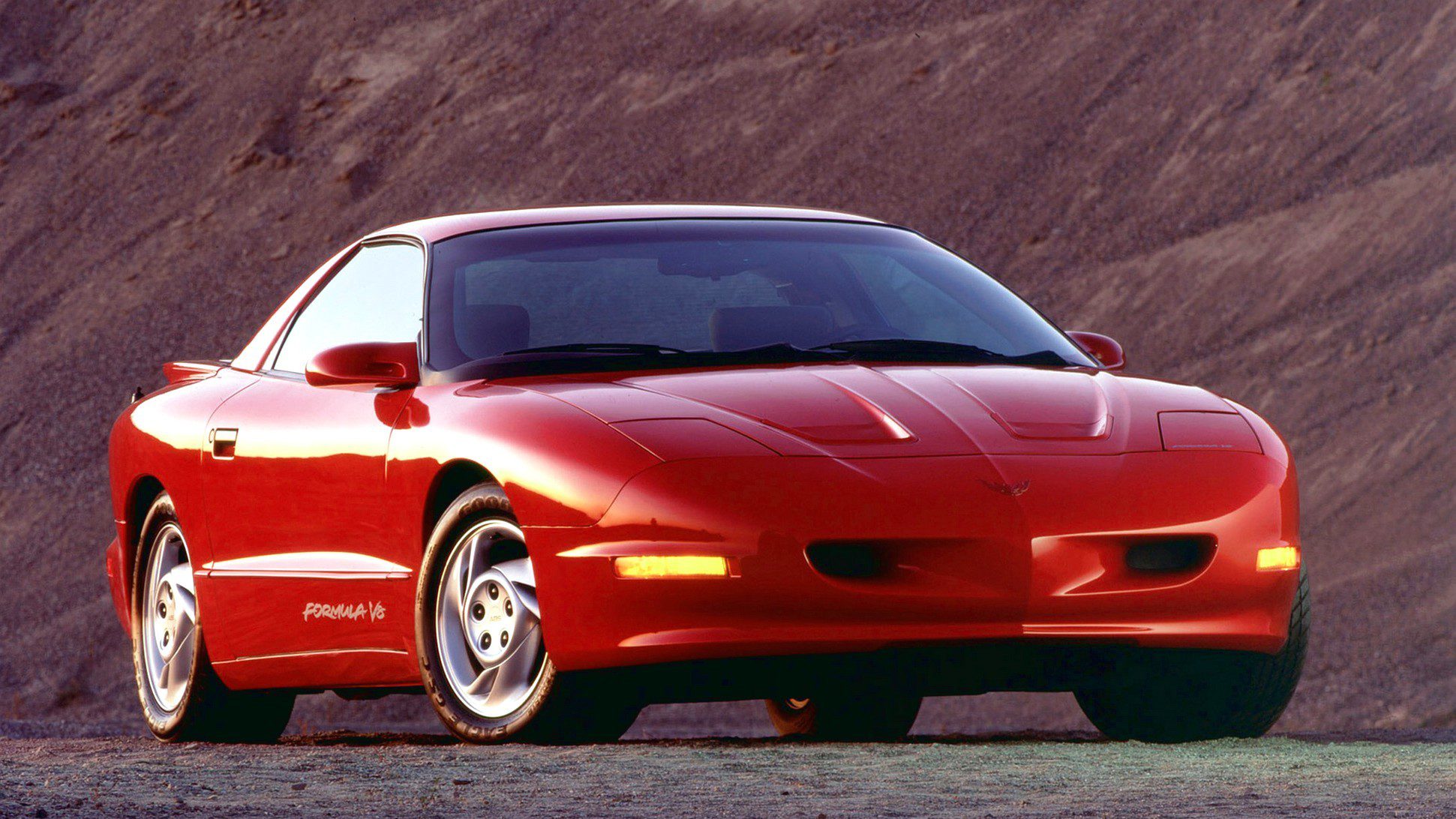
Alright, gearheads, let’s talk about something truly special, something that stirs the soul and empties the wallet at the same time: the glorious, unapologetic gas guzzler. In an era where every manufacturer is bending over backward to squeeze out another MPG, and electrification looms large, there’s a certain defiant charm in looking back at a time—and certain vehicles—when fuel efficiency was little more than an afterthought, a footnote drowned out by the roar of pure, unadulterated power. We’re talking about machines built for speed, for torque, for presence, and utterly unconcerned with what the pump might demand.
For decades, the V8 engine has stood as a symbol of American automotive might, a thrumming heart of raw power beneath the hood of countless muscle cars, trucks, and luxury cruisers. But the pursuit of horsepower and displacement wasn’t exclusive to eight cylinders; automotive engineers across the globe, from Italy to Germany and beyond, pushed boundaries with V10s, V12s, and even W16s, all in the name of performance. These engines weren’t just powerful; they were statements, mechanical declarations that engineering prowess could overcome any practical concern, especially when it came to how much dinosaur juice they consumed.
Today, we’re taking a deep dive into the legendary beasts that defined the term “gas guzzler.” Forget your hybrids and your tiny turbo-fours; this is a celebration of excess, of engines that prioritized raw output above all else, leaving a trail of empty fuel tanks and wide smiles in their wake. We’ve combed through the archives to bring you nine of the most notoriously fuel-inefficient powerplants to ever grace our roads, each one a testament to an era, or a philosophy, where performance was king, and MPG ratings were just numbers to be ignored. Let’s fire up these behemoths and remember a time when engine size genuinely mattered.
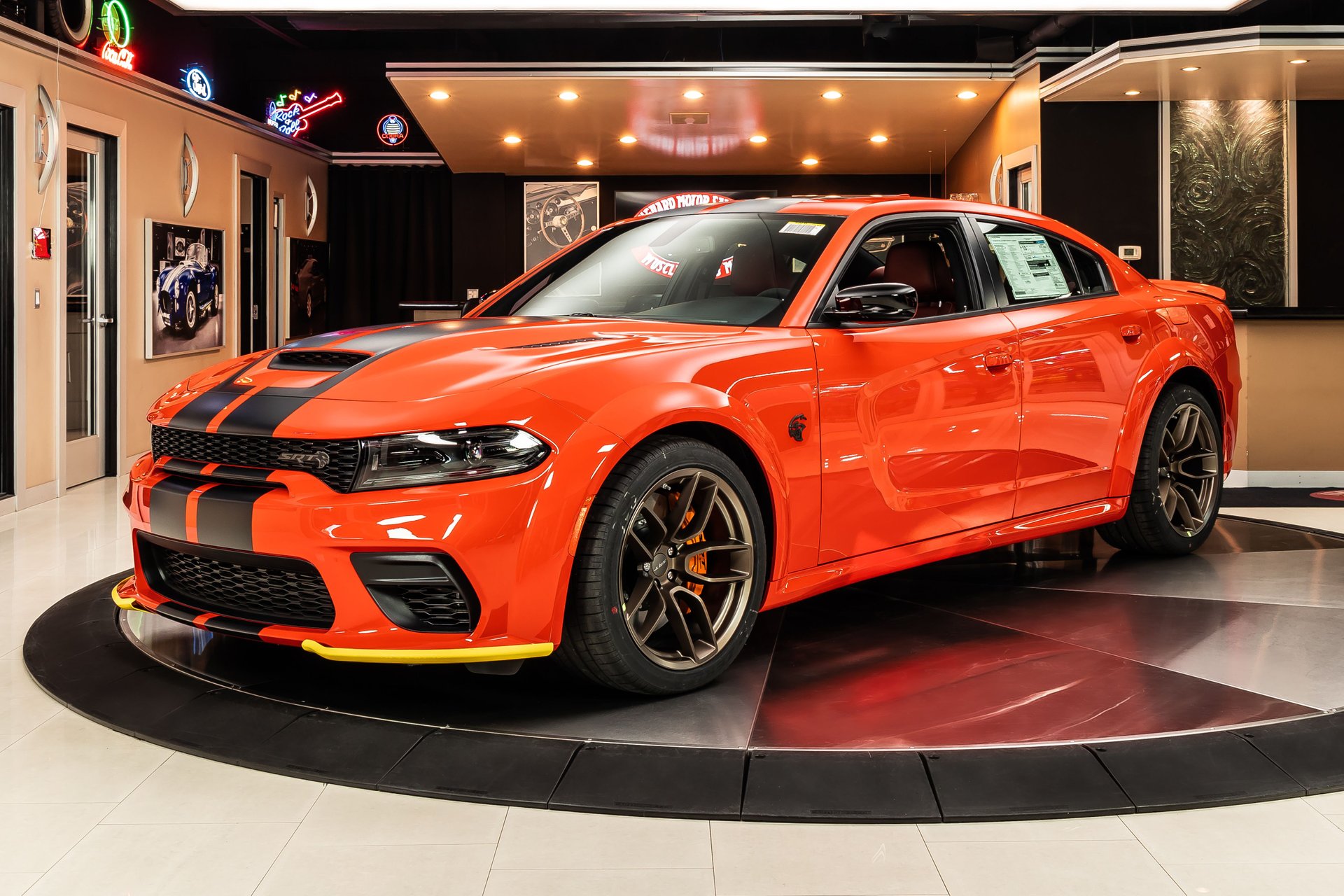
1. **Dodge Viper V10 (1992-2017)**Ah, the Dodge Viper V10. Just uttering those words conjures images of raw, untamed American muscle, a beast unleashed onto the pavement with no apologies. Introduced in 1992, this engine wasn’t just big; it was a defiant middle finger to automotive refinement, a brute-force approach to performance that endeared it to purists and terrified everyone else. The 8.0-liter V10 was an absolute marvel of excess, a naturally aspirated titan designed for one thing and one thing only: astounding horsepower, delivered without electronic nannies or delicate manners.
The Viper’s V10 quickly became an icon, a symbol of American engineering prowess that focused squarely on delivering an exhilarating driving experience. Its thunderous roar and brutal acceleration were legendary, making it a favorite among enthusiasts who craved visceral thrills. This was a car that demanded respect, a machine that truly tested the limits of both driver skill and tire adhesion. It wasn’t about subtle curves or quiet cruising; it was about raw power, and the sheer audacity of its engineering.
However, for all its power and glory, the Viper V10 had a dirty secret, one that every owner quickly became acquainted with: an insatiable thirst for gasoline. Drivers of this monstrous machine routinely reported MPG figures that dipped into the single digits, especially when they indulged in the very “spirited drives” the car was built for. This wasn’t a flaw; it was a feature, an inherent characteristic of an engine that prioritized every ounce of horsepower over any notion of efficiency. The price of that power, quite literally, was steep, ensuring frequent stops at the gas pump.
Ultimately, the Viper V10’s inefficiency wasn’t a detractor; it only added to its legend. It solidified its reputation as a performance car built for passion, not practicality. It was a vehicle that embraced its flaws, celebrated its excesses, and demanded that its owners do the same. This engine wasn’t just a powerplant; it was a character in its own right, a loud, proud testament to a time when burning fuel was simply the cost of doing glorious, pavement-shredding business. It truly embodied the spirit of a “gas guzzler” in the most magnificent way imaginable.
Car Model Information: 2017 Dodge Viper GTC
Name: Dodge Viper
Caption: 2013 SRT Viper GTS Launch Edition
Manufacturer: Dodge
Production: 1991–2006,2007–2017
Assembly: Detroit,Michigan
Class: Sports car
BodyStyle: liftback,coupe
Layout: Longitudinal engine,Front mid-engine, rear-wheel drive layout
Engine: Viper engine,{{convert,488,cuin,L,abbr=on,1,order=flip,lk=on
Abbr: on
Order: flip
Powerout: SR-I and II:,{{convert,400,hp,PS kW,0,abbr=on,lk=on
Lk: on
ModelYears: 1992–2006,2008–2017
Categories: 1990s cars, 2000s cars, 2010s cars, All accuracy disputes, All articles with unsourced statements
Summary: The Dodge Viper is a sports car that was manufactured by Dodge (by SRT for 2013 and 2014), a division of American car manufacturer Chrysler from 1992 until 2017, having taken a brief hiatus in 2007 and from 2011 to 2012. Production of the two-seat sports car began at New Mack Assembly Plant in 1991 and moved to Conner Avenue Assembly Plant in October 1995.
Although Chrysler considered ending production because of serious financial problems, on September 14, 2010, then–chief executive Sergio Marchionne announced and previewed a new model of the Viper for 2012. In 2014, the Viper was named number 10 on the “Most American Cars” list, meaning 75% or more of its parts are manufactured in the U.S. The Viper was eventually discontinued in 2017 after approximately 32,000 were produced over the 26 years of production.
The 0–60 mph (97 km/h) time on a Viper varies from around 3.5 to 4.5 seconds. Top speed ranges from 160 mph (260 km/h) to over 200 mph (320 km/h), depending on variant and year.
Get more information about: Dodge Viper
Buying a high-performing used car >>>
Brand: Dodge Model: Viper
Price: $275,000 Mileage: 13,105 mi.
Read more about: Gone But Not Forgotten: Unearthing the Stories Behind 14 Iconic American Cars That Drove Off into the Sunset
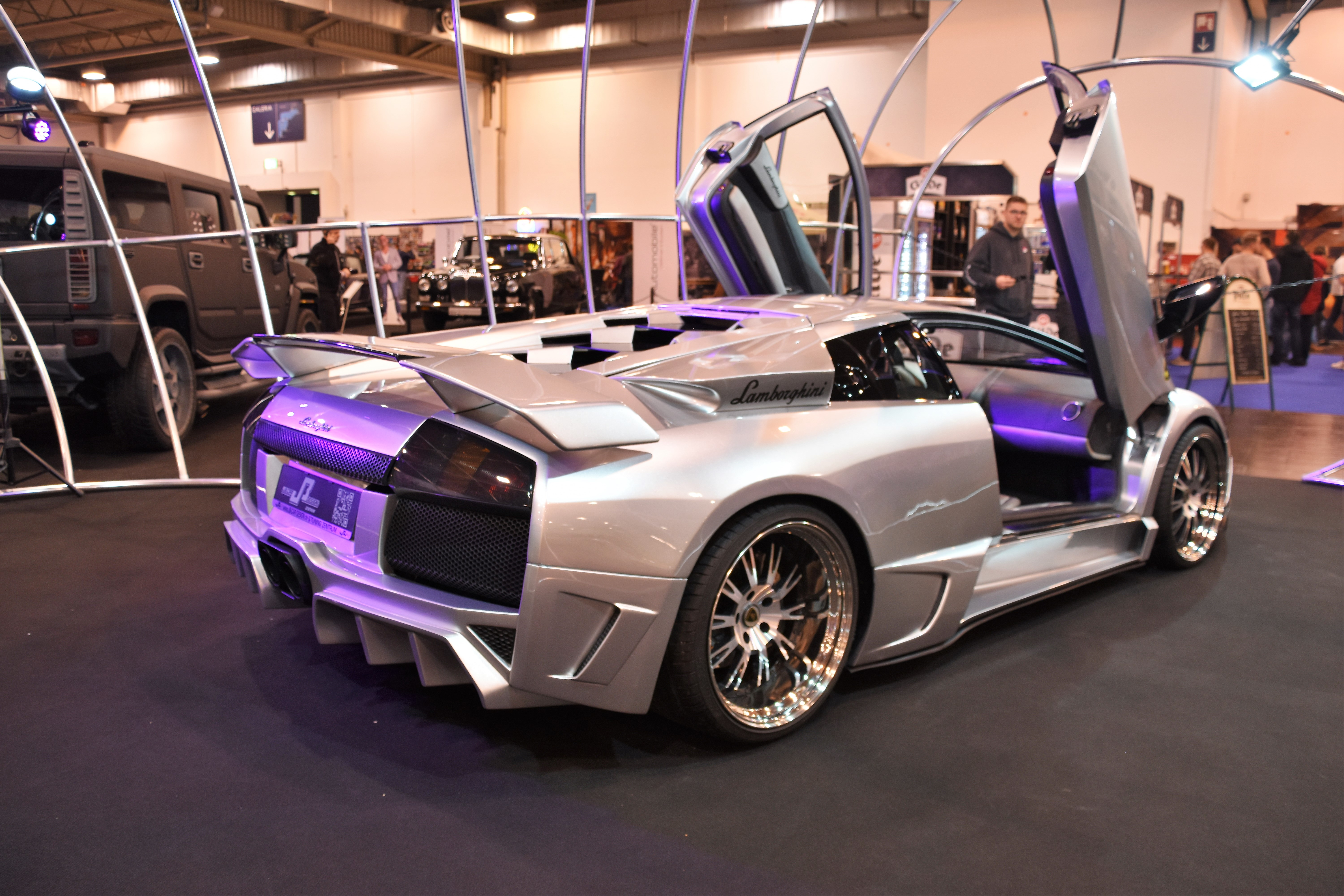
2. **Lamborghini Murciélago V12 (2001-2010)**From the heartland of American might, we jet across the Atlantic to the land of exquisite automotive art: Italy. Here, Lamborghini unleashed the Murciélago V12, an engine that was less about efficiency and more about delivering an unapologetic symphony of speed and luxury. With its 6.2-liter engine, the Murciélago’s V12 was engineered for one purpose: to dominate the road with a thrilling ride, a breathtaking sound, and a visual presence that turned heads faster than its engine revved.
The Murciélago itself was a statement—a low-slung, aggressive supercar that epitomized the Lamborghini ethos. And at its core was this magnificent V12, a powerplant that sang a high-pitched, mechanical opera as it propelled the car to blistering speeds. Every aspect of its design, every technological choice, was geared towards maximizing acceleration and achieving top speeds that bordered on the absurd. This was a car for those who lived life at 200 mph, a machine that transformed ordinary drives into extraordinary events, demanding attention at every turn.
Of course, such unbridled performance comes at a cost, and for the Murciélago V12, that cost was measured in gallons. Drivers could realistically expect fuel economy figures hovering in the dismal range of 9-11 MPG. For anyone considering such a vehicle, efficiency simply wasn’t on the checklist; it was completely overshadowed by the allure of its incredible power and the sheer exhilaration it provided. The notion of “frequent fuel stops” was not an inconvenience but merely an inherent part of the extravagant Murciélago ownership experience.
The V12 in the Murciélago wasn’t just an engine; it was a testament to a philosophy where raw, emotional performance trumped all other considerations. It served as a powerful reminder that for a certain segment of the automotive world, the joy of acceleration, the thrill of top speed, and the prestige of a screaming naturally aspirated engine were far more valuable than any green credentials. This truly was a V12 designed for the fortunate few who valued ultimate automotive passion above all else, including what they paid at the pump.
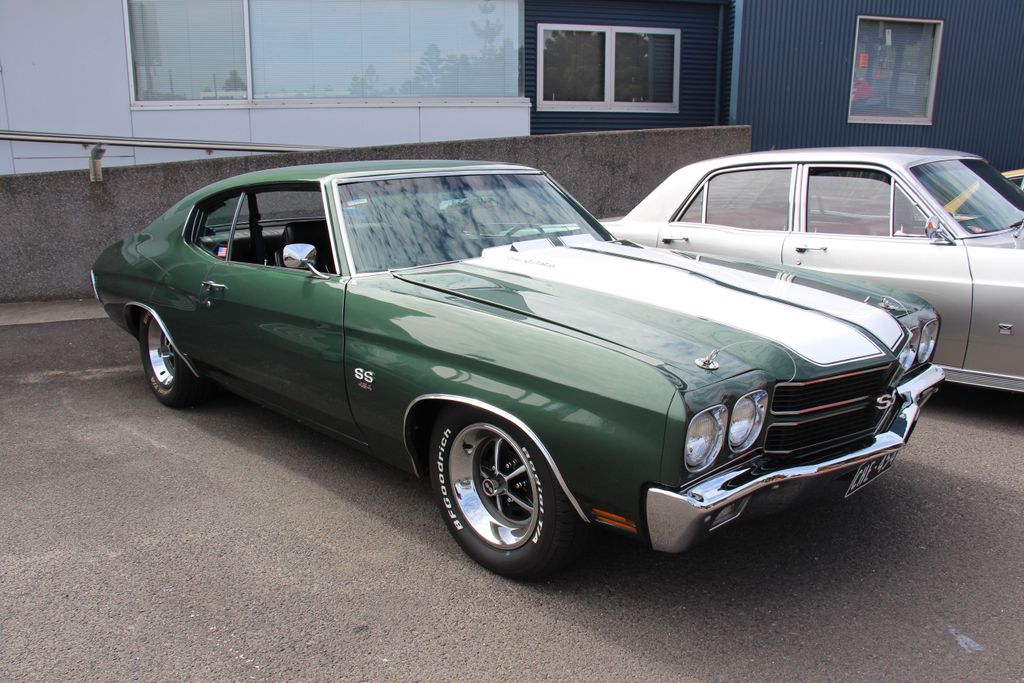
3. **Chevrolet 454 V8 (1970-1990s)**Shifting gears back to American iron, we encounter a legend that embodied brute force for decades: the Chevrolet 454 V8. This engine, often found lurking under the hoods of massive vehicles like the Suburban and the iconic Chevelle, was not built for subtlety or sips of fuel. Instead, with a colossal displacement of 7.4 liters, the 454 was engineered for unadulterated power and torque, designed to move mountains (or at least, incredibly heavy loads and muscle cars) with an almost casual authority. It was the quintessential big block, a king among V8s.
The 454 V8 came of age in an era when displacement was king, and more cubic inches directly translated to more horsepower and a bigger presence. It was a staple in the muscle car wars of the 1970s, providing the kind of tire-shredding torque that legends are made of. Even beyond the performance cars, its sheer grunt made it the go-to choice for heavy-duty trucks and SUVs, vehicles where towing capability and hauling power were paramount. This engine was a workhorse, but a workhorse with a penchant for speed and a roaring soundtrack.
Unsurprisingly, the colossal size and power output of the Chevrolet 454 V8 came with a considerable appetite for fuel. Drivers commonly reported fuel economy numbers in the rather terrifying range of 8-12 MPG, figures that would send shivers down the spine of any modern eco-conscious motorist. This inefficiency was particularly pronounced when the engine was put to task, such as during towing or heavy hauling, exactly what it was designed to do. The more work it did, the more it drank, and it loved to work.
As the automotive landscape began to shift in the 1990s, with increasing pressure from tightening fuel economy standards and growing environmental awareness, the reign of the gas-guzzling 454 V8 inevitably came to an end. It was retired, marking the close of an era when such unapologetically inefficient engines could be mainstream powerplants. Yet, its legacy as a formidable, if thirsty, powerhouse endures, a symbol of American engineering focused on pure, unadulterated, big-block muscle. It was truly a monument to a time when fuel was cheap and power was paramount.
Car Model Information: 1969 Chevrolet Chevelle SS
Name: Chevrolet Chevelle
Caption: 1970 Chevrolet Chevelle SS 396 Sport Coupe
Manufacturer: Chevrolet
Production: 1963–1977
ModelYears: 1964–1977
Class: Mid-size
Platform: GM A platform (RWD)
Layout: FR layout
Successor: Chevrolet Malibu
Categories: 1970s cars, All articles needing additional references, All articles that may contain original research, All articles with specifically marked weasel-worded phrases, All articles with unsourced statements
Summary: The Chevrolet Chevelle is a mid-sized automobile that was produced by the Chevrolet division of General Motors (GM) in three generations for the 1964 to 1977 model years. Part of the GM A-body platform, the Chevelle was one of Chevrolet’s most successful nameplates. Body styles included coupes, sedans, convertibles, and station wagons. The “Super Sport” versions were produced through the 1973 model year and Lagunas from 1973 through to 1976.
After a four-year absence, the El Camino was reintroduced as part of the new Chevelle lineup in 1964.
From 1964 to 1969, GM of Canada sold a modified version of the Chevelle that included a Pontiac-style grille, and a LeMans instrument panel, marketed as the Beaumont.
The Malibu was the top-of-the-line model to 1972, and completely replaced the Chevelle nameplate starting with the redesigned, and downsized 1978 model year.
Get more information about: Chevrolet Chevelle
Buying a high-performing used car >>>
Brand: Chevrolet Model: Chevelle
Price: $119,550 Mileage: 93 mi.

4. **Rolls-Royce Phantom V12 (2003-present)**Now, let’s pivot from raw muscle and screaming supercars to the pinnacle of automotive luxury: the Rolls-Royce Phantom V12. For many, a Rolls-Royce represents a world where mere fuel costs are utterly irrelevant, a vehicle where every design choice is made to maximize refinement, comfort, and an almost ethereal sense of quiet power. The Phantom’s 6.75-liter engine, while technically a V12 (as per its full name, though the descriptive text just calls it 6.75-liter engine), is a masterpiece of smooth operation, designed to waft its occupants along in serene silence, insulated from the vulgarities of the outside world.
The Phantom V12 isn’t about neck-snapping acceleration or ear-splitting exhaust notes; it’s about effortless, abundant power delivered with unparalleled smoothness. Every detail of the engine’s operation is meticulously engineered to provide a seamless driving experience, where power appears limitless, yet never intrusive. It’s about prestige, status, and the quiet confidence that comes from owning a vehicle where no expense has been spared in the pursuit of absolute luxury and sophisticated performance. The engine simply works, invisibly providing immense capability.
Despite its focus on refinement, the Phantom’s substantial 6.75-liter engine, like many engines of its displacement, comes with a predictable downside for those who *do* concern themselves with such matters: poor fuel economy. Averaging a rather unimpressive 12 MPG, this engine clearly prioritizes its mission of delivering supreme refinement and quiet operation over any fleeting thoughts of efficiency. For the typical Rolls-Royce buyer, whose primary concern is the unparalleled luxury and bespoke experience, the Phantom’s fuel consumption is largely an afterthought, a negligible detail in the grand scheme of opulence.
However, even in the rarefied air of ultra-luxury, the Phantom’s low MPG stands out, particularly as environmental awareness continues to grow globally. It serves as a stark reminder that even the most meticulously engineered engines, when tasked with moving such a grand and luxurious vehicle, will inevitably drink deeply from the fuel tank. This V12, then, is a symbol not just of luxury, but also of a certain detachment from conventional automotive concerns, embodying a world where efficiency is simply not part of the equation when true grandeur is the objective.
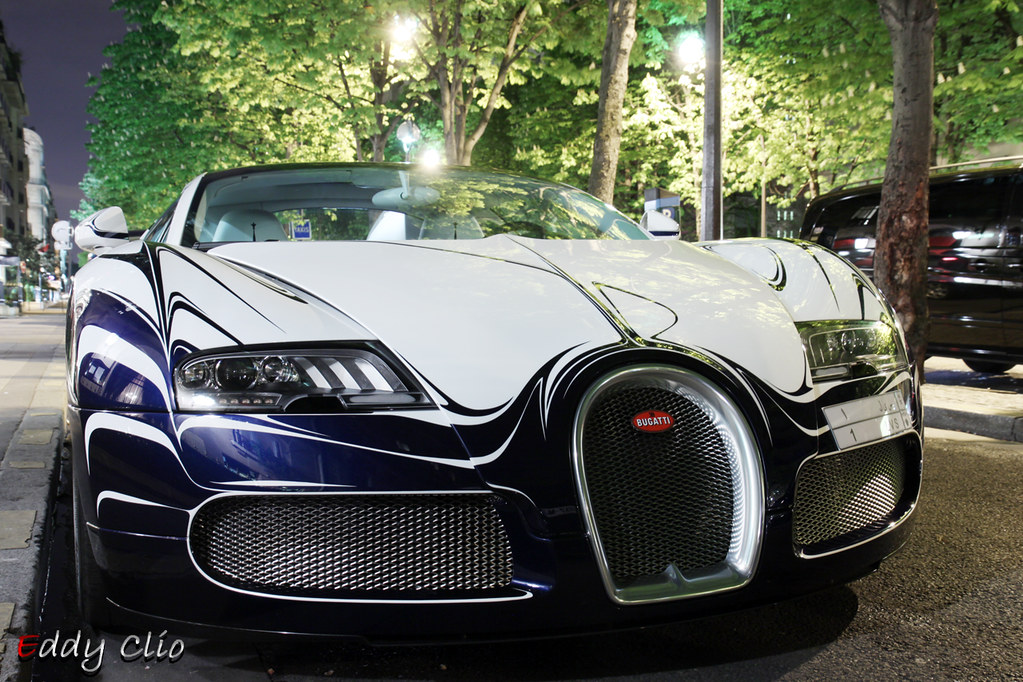
5. **Bugatti Veyron W16 (2005-2015)**And now, we arrive at what can only be described as a marvel of engineering overkill, a vehicle that fundamentally rewrote the rulebook for performance and, consequently, fuel consumption: the Bugatti Veyron’s W16 engine. This isn’t just a V-something; it’s a quad-turbocharged, 1,000-horsepower W16 engine, a truly unique configuration that pushed the boundaries of automotive design and propulsion. When the Veyron debuted, it wasn’t just fast; it was in a league of its own, a hypercar designed solely to shatter speed records and dominate headlines.
The W16 engine in the Veyron was a testament to engineering ambition, a complex masterpiece designed to extract every possible ounce of power. Its four turbochargers worked in concert to force-feed the massive sixteen cylinders, creating an output that seemed almost fictional at the time of its release. This was a car that didn’t just go fast; it warped reality, accelerating with a ferocity that few machines before or since have been able to replicate. The Veyron was a statement that ultimate speed had a new benchmark, and its engine was the undisputed heart of that declaration.
Predictably, all that power and engineering wizardry came at an astronomical price, not just in terms of purchase cost, but in fuel consumption. The Veyron, under what would be considered “normal conditions” for a hypercar (which is still far from normal driving), could only manage a meager 10 MPG. But here’s where it gets truly wild: push this engineering marvel to its absolute limits, unleash all 1,000 horsepower, and that figure would plummet to an astonishingly low 5 MPG. Yes, you read that right—5 miles per gallon.
This extreme inefficiency wasn’t an oversight; it was an accepted, even celebrated, consequence of pursuing absolute top speed records. The Bugatti Veyron’s W16 engine embodied a philosophy where the ultimate goal of unparalleled performance transcended all practical considerations, including environmental impact or fuel costs. It was a glorious, fuel-guzzling monument to human ingenuity and the relentless pursuit of speed, a machine that dared to defy convention and stand alone as the ultimate beast of consumption. For the Veyron, burning fuel was simply the sound of speed.
Alright, petrolheads, if you thought our first five entries were audacious, brace yourselves. We’ve barely scratched the surface of automotive excess. While the world frets over electric vehicle ranges and hybrid efficiency, these next four machines stand as glorious, defiant monuments to a bygone era, or perhaps, a timeless philosophy: screw the pump, let’s make some noise! We’re not just looking at engines; we’re looking at declarations of automotive intent, where the raw, unadulterated thrill of power and prestige utterly obliterated any fleeting thought of fuel economy. This isn’t just about V8s; it’s about vehicles that embraced their thirst as part of their identity.
The journey continues, spotlighting four more monumental machines that unashamedly prioritized brute force and presence, cementing their status as true gas guzzling icons. From a high-strung Italian stallion to a purpose-built track monster, and even a ridiculously overpowered pickup truck, these vehicles prove that sometimes, engineering a beast means letting it drink its fill. So, buckle up, because we’re diving deep into the glorious, inefficient heart of automotive history, one prodigious gulp at a time.

6. **Ferrari 599 GTB Fiorano V12 (2006-2012)**You didn’t really think we’d leave Maranello out of this party, did you? When it comes to high-performance luxury at the expense of fuel efficiency, Ferrari is practically a founding member. The 599 GTB Fiorano, with its absolutely symphonic 6.0-liter V12, is a prime example of why enthusiasts willingly empty their wallets at the pump for the privilege of experiencing such automotive poetry. This isn’t just a car; it’s a sensory overload, a masterpiece of Italian engineering designed to thrill every fiber of your being.
The heart of the 599, that magnificent 6.0-liter V12, was tuned for sheer exhilaration. It wasn’t about subtle efficiency; it was about unleashing a torrent of horsepower with a sound that could raise the dead. Every rev was a declaration, every acceleration run a testament to Ferrari’s unwavering commitment to performance. Averaging around 11 MPG, Ferrari essentially declared this a “small price to pay for the exhilaration of its speed and handling.” And honestly, who are we to argue when the experience is this intoxicating?
Let’s be brutally honest: for the designers and engineers at Ferrari, “environmental concerns were an afterthought.” Their singular focus was on crafting “thrilling, track-ready vehicles,” and if that meant burning through fuel faster than a space shuttle launch, then so be it. The 599 GTB Fiorano stands as a shining beacon of this philosophy, a reminder that some cars exist purely for the passion of driving, for the thrill of the open road, and for the unmistakable roar of a naturally aspirated V12. Efficiency? That’s a problem for another day, and another car.
This magnificent machine was never intended for economy runs or grocery trips; it was built for winding roads, for track days, and for announcing your arrival with an unforgettable auditory flourish. Its poor fuel economy was simply a direct consequence of Ferrari’s dedication to creating an unparalleled driving experience. It’s a bold, beautiful, and unapologetically thirsty tribute to the art of speed.
Car Model Information: 2019 Hyundai SANTA FE 2.4 Ultimate
Name: Ferrari 599
Manufacturer: Ferrari
Aka: Ferrari 599 GTB Fiorano
Production: 2006–2012
ModelYears: 2007–2012
Assembly: Maranello
Designer: Jason Castriota
Url: https://www.ferrari.com/en-EN/auto/599-gtb-fiorano
Title: Ferrari 599 GTB Fiorano
Website: velocetoday.com
AccessDate: 14 May 2024
Class: Grand tourer
BodyStyle: berlinetta
Related: Ferrari 612 Scaglietti,Ferrari 599XX
Layout: Mid-engine design#FMR layout – Front Mid-engine / Rear-wheel drive,rear-wheel-drive
Publisher: Ferrari
Engine: 5999 cc
Abbr: on
Order: cite web
Powerout: ubl
Transmission: manual transmission
Wheelbase: 2750 mm
Length: 4665 mm
Width: 1962 mm
Height: 1336 mm
Weight: 3953 lb
Predecessor: Ferrari 575M Maranello
Successor: Ferrari F12
Categories: 2010s cars, Articles with short description, Cars introduced in 2006, Commons category link is on Wikidata, Ferrari vehicles
Summary: The Ferrari 599 GTB Fiorano (internal code F141) is a grand tourer produced by the Italian automobile manufacturer Ferrari. It served as the brand’s front-engined, two-seat model, replacing the 575M Maranello in 2006 as a 2007 model, and was later replaced for the 2013 model year by the F12berlinetta.
Styled by Pininfarina under the direction of Jason Castriota, the 599 GTB debuted at the Geneva Motor Show in February 2006. The bodywork features optimized aerodynamics with distinct sail panels flanking the rear window, directing and maximizing air flow to a linear rear nolder.
The 599 is named for its total engine displacement 5,999 cc (6.0 L), Gran Turismo Berlinetta nature, and the Fiorano Circuit test track used by Ferrari.
Get more information about: Ferrari 599
Buying a high-performing used car >>>
Brand: Ferrari Model: 599 GTB Fiorano
Price: $21,898 Mileage: 51,164 mi.
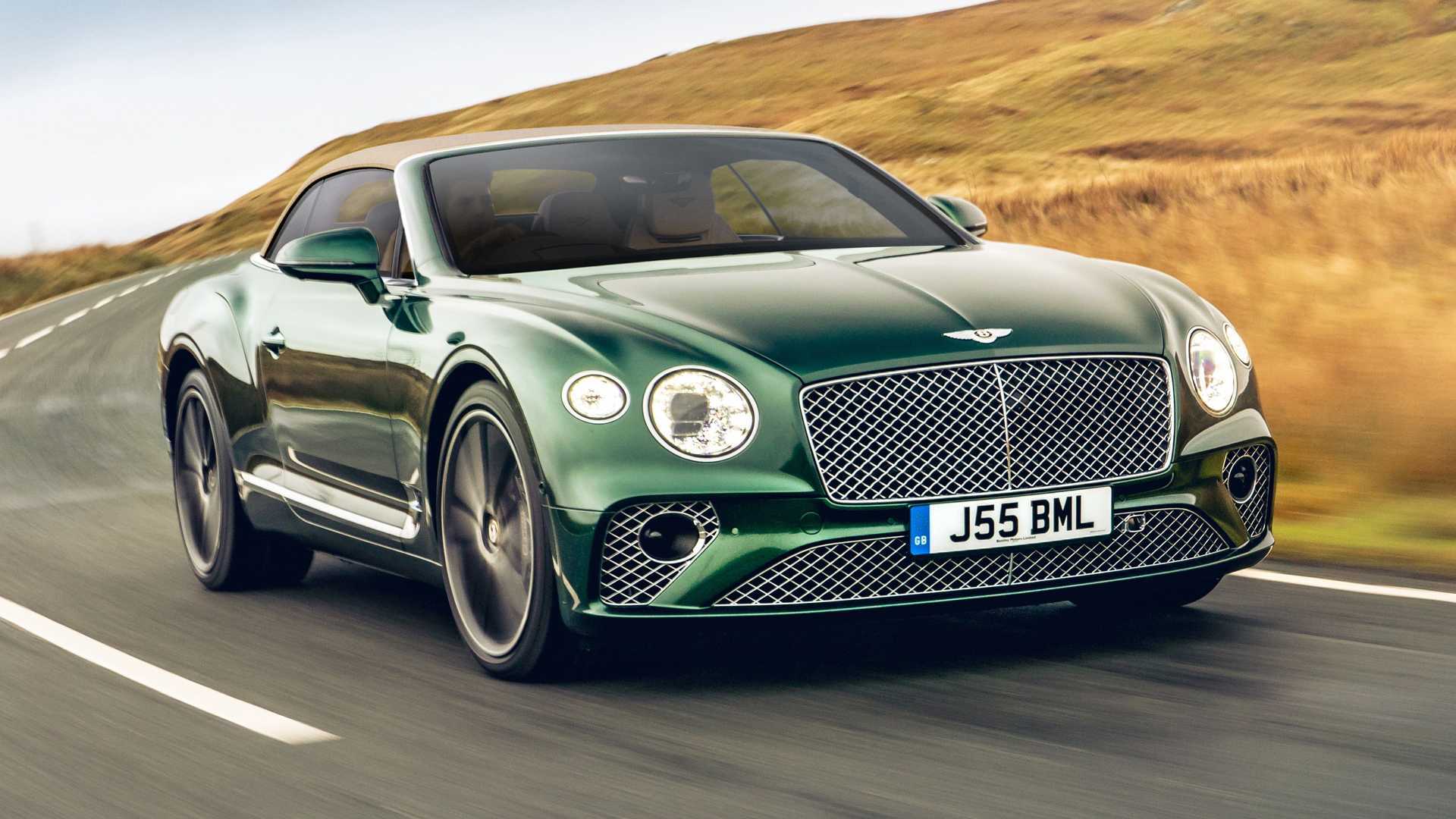
7. **Bentley Mulsanne 6.75L V8 (2010-2020)**From the screaming V12s of Italy, we now drift gracefully into the realm of quintessential British opulence, where luxury reigns supreme and performance is delivered with a velvet glove. Enter the Bentley Mulsanne, a behemoth of bespoke craftsmanship powered by a colossal 6.75-liter V8 engine. This isn’t just a car; it’s a statement, a rolling palace designed to cocoon its occupants in unparalleled comfort, effortlessly gliding over the tarmac as if on a cloud.
The Mulsanne’s legendary 6.75-liter V8, an engine with a lineage almost as long as Bentley’s history itself, is an absolute masterclass in delivering silken, effortless power. It’s engineered for smooth ride and luxurious performance, ensuring that even at ludicrous speeds, the cabin remains a sanctuary of calm. However, this magnificent dedication to refinement and gargantuan size meant that fuel efficiency was, shall we say, “sacrificed.” Averaging around 10-12 MPG, this engine’s thirst is a significant drawback for a vehicle in the ultra-luxury segment, if you’re the type to notice such trivialities.
For the fortunate few who could afford the Mulsanne’s dizzying price tag, “fuel consumption took a backseat to the prestige of owning a Mulsanne.” The true selling points were its sheer power and comfort, not how many miles it could wring out of a gallon of premium. Frequent trips to the pump were simply “the price for such opulence,” a minor inconvenience almost entirely irrelevant to an owner for whom time and money are often interchangeable commodities. This car doesn’t sip; it drinks deeply, celebrating its heritage with every drop.
It’s an interesting dichotomy, isn’t it? A vehicle so focused on supreme comfort and an almost regal presence, yet at its heart, a V8 that gulps fuel with the same voraciousness as any muscle car. The Mulsanne perfectly illustrates how, in the rarefied atmosphere of ultra-luxury, the pursuit of engineering perfection and an unmatched driving experience often means that efficiency simply isn’t a priority. It’s a grand, inefficient testament to old-money luxury, defying modern sensibilities with every mile.
Car Model Information: 2014 Bentley Mulsanne Base 4dr Sedan
Name: Bentley Mulsanne
Manufacturer: Bentley Motors
Production: March 2010 – June 2020
ModelYears: 2011–2020
Assembly: Crewe
Designer: Dirk van Braeckel
Class: Full-size,luxury car
BodyStyle: Sedan (automobile)
Layout: Front-engine, rear-wheel-drive layout
Engine: twin-turbocharged,Rolls-Royce–Bentley L-series V8 engine
Transmission: ZF 8HP
Wheelbase: 3266 mm
Abbr: on (EWB)
Length: 5575 mm
Width: Convert
Height: 1521 mm
Weight: cvt,convert
Predecessor: Bentley Arnage
Sp: uk
Categories: All Wikipedia articles written in British English, Articles with short description, Bentley vehicles, CS1 errors: bare URL, CS1 errors: missing title
Summary: The Bentley Mulsanne is a full-size luxury car that was manufactured and marketed by British automaker Bentley Motors from March 2010 to June 2020. It served as the flagship automobile for the company during its production run. Honorifically, the Mulsanne was referred to as “The Grand Bentley” during its development.
Replacing the Rolls-Royce-based Arnage, the Mulsanne was Bentley’s first independently-built automobile since the 8 Litre, which W. O. Bentley conceived. Unveiled initially at the Pebble Beach Concours d’Elegance, the Mulsanne retained two key elements from the Arnage—rear-wheel drive with the front axle centerline optimally positioned forward, and a 6.75-litre push-rod V8 engine equipped with twin-turbochargers. The individualistic headlamps were designed to resemble those of the Jaguar S-Type from the 1960s. Throughout its ten-year manufacturing period, Bentley produced approximately 7,900 examples at the Crewe facility. The Mulsanne has generally been well received, with Jeremy Clarkson claiming that the ride is quiet and the torques were great while criticising the number of switches and the fact that it was less “tasteful” than a Rolls-Royce Ghost.
In 2005, development work on the Mulsanne officially commenced under the codename “Project Kimberley”, the name of which was inspired by the Kimberley diamond originating from South Africa. Styled by Belgian automobile designer Dirk van Braeckel, the Mulsanne is a four-door sedan which was offered in two body lengths: short- and extended-wheelbase. Incorporating various internal and external elements from the Arnage, it employs a blend of high-strength steel and lightweight aluminium. The team that assembles the Mulsanne is composed of 298 Bentley employees. The interior was designed under the direction of British automobile designer Robin Page, who also led that of the second-generation Continental GT. Each individual unit undergoes a meticulous process that takes 400 hours (2 weeks), of which 136 hours (five days) are dedicated to interior trimming.
Production of the Mulsanne concluded on 25 June 2020, signifying not only the end of its ten-year manufacture but also the end of Bentley’s 6¾-litre engine after a consecutive 61-year production period. The 6¾-litre V8 engine, introduced in 1959 and heavily revised and updated in 2010, could not be updated any further to meet the increasingly stringent emission regulations, namely CO2 emissions. No replacement for either Mulsanne or 6¾-litre V8 engine is planned. Instead, the third generation Flying Spur would succeed the Mulsanne as Bentley’s flagship model.
Get more information about: Bentley Mulsanne (2010)
Buying a high-performing used car >>>
Brand: Bentley Model: Mulsanne
Price: $69,888 Mileage: 34,157 mi.

8. **Dodge Ram SRT-10 (2004-2006)**Alright, now let’s talk about something truly bonkers, a machine that defied all reason and logic to exist: the Dodge Ram SRT-10. Forget your dainty sports trucks; this was a “unique performance truck” that asked, “What if we crammed an 8.3L V10 engine, straight out of a Dodge Viper, into a pickup?” The answer, as you might guess, was a glorious, tire-shredding, gas-guzzling monster that redefined what a truck could be. This wasn’t built for hauling lumber, folks; it was built for hauling asphalt.
The engine, that mighty 8.3L V10 borrowed directly from the legendary Dodge Viper, gave the Ram SRT-10 an “undeniable power” that turned this utilitarian workhorse into a street-legal drag racer. You wanted power? You got it in spades. You wanted efficiency? Well, you clearly picked the wrong truck. Drivers reported averaging “just 9-12 MPG,” a figure that should surprise precisely no one given the engine’s lineage and the truck’s hefty curb weight. That speed, that unparalleled ability to smoke most sports cars off the line, “came at the cost of frequent refueling.”
Dodge proudly “marketed [it] as the world’s fastest production truck,” and for a brief, glorious period, it absolutely was. But the unapologetic thirst for fuel proved to be a significant Achilles’ heel. “The truck’s high fuel consumption limited its appeal, and production was short-lived,” making it a rare and highly sought-after collectible today. It was a wild experiment, a brazen statement of American automotive bravado that chose brute force over any hint of practicality or environmental consideration.
The SRT-10 was a magnificent anachronism, a glorious V10 engine strapped into a truck body, daring the world to question its existence. It was loud, it was impractical, and it was spectacularly inefficient, embodying the very spirit of a “gas guzzler” in the most hilariously over-the-top way possible. This truck was a brief, shining moment of pure, unadulterated automotive insanity, and we wouldn’t have it any other way.
Car Model Information: 2019 Hyundai SANTA FE 2.4 Ultimate
Name: Dodge Ram SRT-10
Aka: Ram SRT-10 (Europe)
Manufacturer: DaimlerChrysler
Production: 2004–2006
Assembly: Saltillo, Coahuila
Layout: FR layout
Class: Sports car,pickup truck
Platform: Chrysler DR platform
BodyStyle: 2-door regular cab,4-door Quad Cab
Wheelbase: 120.5 in
Abbr: on
Length: 203.1 in
Width: 79.9 in
Height: 74.4 in
Engine: Viper engine,V10 engine
Powerout: horsepower
Transmission: Tremec T-56 transmission,Manual transmission
Related: Dodge Ram
Categories: All articles needing additional references, All articles with dead external links, Articles needing additional references from June 2008, Articles with dead external links from February 2022, Articles with permanently dead external links
Summary: The Dodge Ram SRT-10 is a sport pickup truck produced by Dodge, based on the standard Ram 1500, with only 10,046 units built. It was introduced as a concept at the January 2002 North American International Auto Show, while the production model was introduced in 2003 as a 2004 model year.
Get more information about: Dodge Ram SRT-10
Buying a high-performing used car >>>
Brand: Dodge Model: Ram SRT-10
Price: $21,898 Mileage: 51,164 mi.

9. **Plymouth Road Runner Superbird 426 HEMI V8 (1970)**And finally, we arrive at a true icon, a feather-light (not really, but you get the idea) legend that absolutely owned the NASCAR tracks and became an undeniable symbol of American muscle: the Plymouth Road Runner Superbird. This wasn’t just a car; it was a wing-wearing, nose-cone-sporting testament to aero-wars and the sheer, unadulterated power of the 426 HEMI V8. If you wanted to fly on the ground, this was your ticket, and it wasn’t concerned with how much fuel it took to get there.
The Superbird, equipped with that monstrous 426 HEMI V8, “prioritized speed over fuel efficiency” in the most dramatic fashion imaginable. Its distinctive “aerodynamic design and massive engine made it a gas-guzzler” of epic proportions. Every element, from the towering rear wing to the extended nose cone, was “designed for NASCAR and built for straight-line speed,” a laser-focused purpose that made fuel economy utterly irrelevant. This was a car built to dominate the oval, not to commute to the office.
Averaging “as little as 8 MPG,” the Superbird’s fuel consumption was, by any modern standard, abysmal. But back in 1970, with fuel prices a fraction of what they are today, this inefficiency was a badge of honor, a small price to pay for a car that commanded respect on the street and fear on the track. Despite its prodigious thirst, “it remains an iconic symbol of the American muscle car era,” a rolling piece of history that perfectly encapsulates a time when raw power and daring design were king.
The Superbird didn’t just burn fuel; it incinerated it, leaving a legacy of smoke, speed, and unforgettable V8 thunder. It stands as a defiant monument to an era when American automakers pushed the boundaries of performance without a second thought for the environmental consequences. It’s a purebred racing machine for the street, a glorious, inefficient beast that proves some legends are forged not in frugality, but in pure, unadulterated excess.
Car Model Information: 2019 Hyundai SANTA FE 2.4 Ultimate
Name: Plymouth Superbird
Manufacturer: Plymouth (automobile)
Wheelbase: 115.8 in
Abbr: on
Length: Convert
Width: 76.4 in
Height: 61.4 in
Weight: Convert
Production: 1970
Assembly: Detroit
Class: muscle car,race car
BodyStyle: coupe
Platform: Chrysler B platform
Layout: FR layout
Engine: cvt,Chrysler Hemi engine,V8 engine,cvt,Chrysler RB engine#440,V8 engine
Related: Plymouth Road Runner,Dodge Charger Daytona
Transmission: Automatic transmission,TorqueFlite
Designer: Gary Romberg
Categories: 1970s cars, All articles with unsourced statements, Articles with short description, Articles with unsourced statements from March 2010, Commons category link is on Wikidata
Summary: The Plymouth Superbird is a highly modified, short-lived version of the Plymouth Road Runner with applied graphic images as well as a distinctive horn sound, both referencing the popular Looney Tunes cartoon character Road Runner. It was the factory’s follow-up stock car racing design, for the 1970 season, to the Dodge Charger Daytona of 1969, and incorporated many engineering changes and modifications (both minor and major) garnered from the Daytona’s season in competition.
The car’s primary rivals were the Ford Torino Talladega and Mercury Cyclone, a direct response to the Mopar aero car. It has also been speculated that a motivating factor in the production of the car was to lure Richard Petty back to Plymouth. Both of the Mopar aero cars famously featured a protruding, aerodynamic nosecone, a high-mounted rear wing and, unique to the Superbird, a horn mimicking the Road Runner’s signature “beep, beep.”
Superbirds equipped with the top-of-the-line 426 cu in (7.0 L) Hemi engine with a pair of four barrel Carter AFB carburetors (2x4bbl) producing 425 hp (317 kW) could accelerate from 0 to 60 mph (97 km/h) in 5.5 seconds.
Get more information about: Plymouth Superbird
Buying a high-performing used car >>>
Brand: Plymouth Model: Road Runner Superbird
Price: $21,898 Mileage: 51,164 mi.
Read more about: Gearhead God: A High-Octane Tour Through John Cena’s Legendary American Muscle Car Empire
So there you have it, folks, a glorious tour de force through the annals of automotive inefficiency, where “gas guzzler” isn’t a pejorative, but a badge of honor. From screaming Italian exotics and understated British luxury barges to brutal American muscle cars and ludicrously overpowered trucks, these machines represent a particular philosophy. They remind us that for all the advancements in green technology and the relentless pursuit of efficiency, there will always be a special place in our hearts (and our garages, if we’re lucky) for those vehicles that unapologetically prioritize raw power, breathtaking speed, and an unforgettable driving experience above all else. They might not be kind to your wallet or the planet, but by golly, they deliver a thrill that’s truly worth every single, glorious drop of fuel. Long live the beasts!

